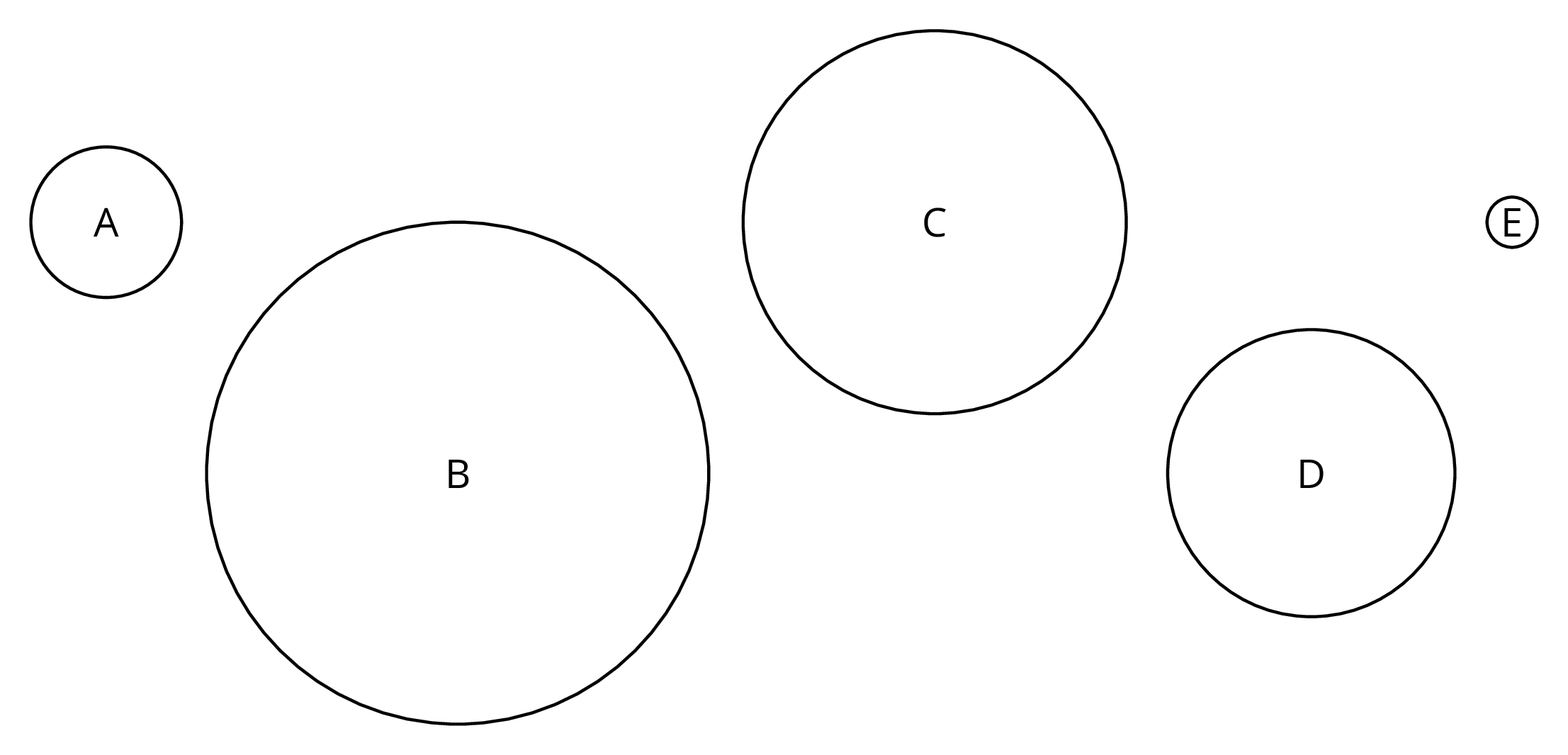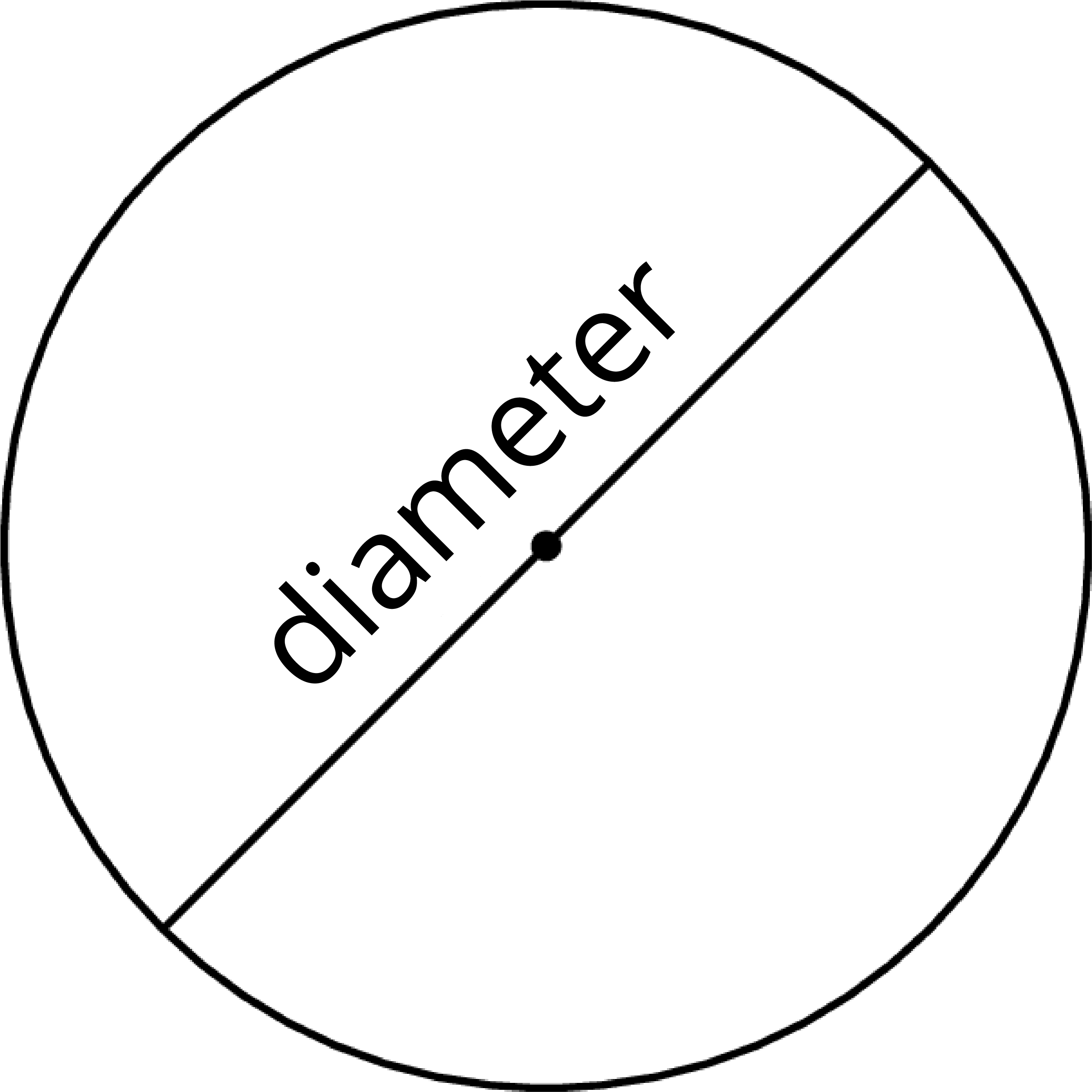Lesson 3
Exploring Circumference
Let’s explore the circumference of circles.
3.1: Which Is Greater?
Clare wonders if the height of the toilet paper tube or the distance around the tube is greater. What information would she need in order to solve the problem? How could she find this out?

3.2: Measuring Circumference and Diameter
Your teacher will give you several circular objects.
-
Explore the applet to find the diameter and the circumference of three circular objects to the nearest tenth of a unit. Record your measurements in the table.
-
Plot the diameter and circumference values from the table on the coordinate plane. What do you notice?
- Plot the points from two other groups on the same coordinate plane. Do you see the same pattern that you noticed earlier?
3.3: Calculating Circumference and Diameter
Here are five circles. One measurement for each circle is given in the table.

Use the constant of proportionality estimated in the previous activity to complete the table.
| diameter (cm) | circumference (cm) | |
|---|---|---|
| circle A | 3 | |
| circle B | 10 | |
| circle C | 24 | |
| circle D | 18 | |
| circle E | 1 |
The circumference of Earth is approximately 40,000 km. If you made a circle of wire around the globe, that is only 10 meters (0.01 km) longer than the circumference of the globe, could a flea, a mouse, or even a person creep under it?
Summary
There is a proportional relationship between the diameter and circumference of any circle. That means that if we write \(C\) for circumference and \(d\) for diameter, we know that \(C=kd\), where \(k\) is the constant of proportionality.
The exact value for the constant of proportionality is called \(\boldsymbol\pi\). Some frequently used approximations for \(\pi\) are \(\frac{22} 7\), 3.14, and 3.14159, but none of these is exactly \(\pi\).

We can use this to estimate the circumference if we know the diameter, and vice versa. For example, using 3.1 as an approximation for \(\pi\), if a circle has a diameter of 4 cm, then the circumference is about \((3.1)\boldcdot 4 = 12.4\) or 12.4 cm.
The relationship between the circumference and the diameter can be written as
\(\displaystyle C = \pi d\)
Glossary Entries
- circle
A circle is made out of all the points that are the same distance from a given point.
For example, every point on this circle is 5 cm away from point \(A\), which is the center of the circle.
- circumference
The circumference of a circle is the distance around the circle. If you imagine the circle as a piece of string, it is the length of the string. If the circle has radius \(r\) then the circumference is \(2\pi r\).
The circumference of a circle of radius 3 is \(2 \boldcdot \pi \boldcdot 3\), which is \(6\pi\), or about 18.85.
- diameter
A diameter is a line segment that goes from one edge of a circle to the other and passes through the center. A diameter can go in any direction. Every diameter of the circle is the same length. We also use the word diameter to mean the length of this segment.

- pi ($\pi$)
There is a proportional relationship between the diameter and circumference of any circle. The constant of proportionality is pi. The symbol for pi is \(\pi\).
We can represent this relationship with the equation \(C=\pi d\), where \(C\) represents the circumference and \(d\) represents the diameter.
Some approximations for \(\pi\) are \(\frac{22}{7}\), 3.14, and 3.14159.
- radius
A radius is a line segment that goes from the center to the edge of a circle. A radius can go in any direction. Every radius of the circle is the same length. We also use the word radius to mean the length of this segment.
For example, \(r\) is the radius of this circle with center \(O\).


